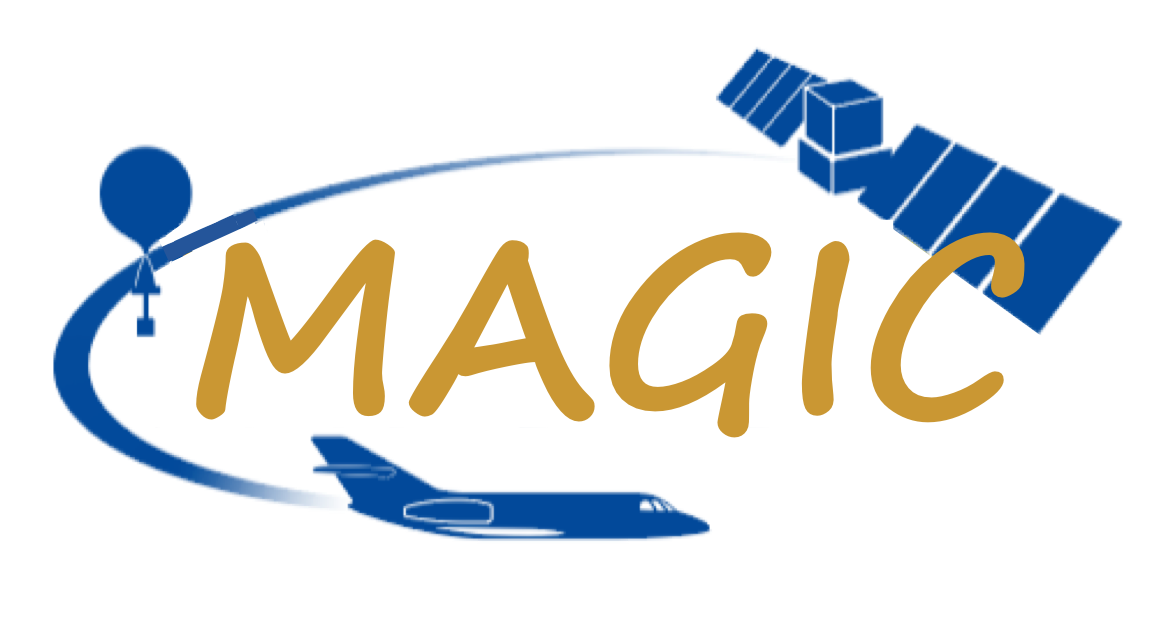The MAGIC2018 campaign
Description

The MAGIC2018 campaign took place between 23-25 May 2018. It relied on the simultaneous observation of the concentration of greenhouse gases from a dozen instruments on board research aircraft, under balloons or deployed on the ground. It took place mainly between the instrumented sites of Aire-sur-l’Adour (ASA) and Trainou-Orléans (TRN) in France.
In the framework of the DLR CoMet campaign, a simultaneous flight between SAFIRE/Falcon20 and DLR/HALO reasearch aircrafts was performed.
In total, two research aircraft, 19 releases of atmospheric probes under balloons and a dozen instruments to measure the concentration of greenhouse gases were deployed for this unprecedented campaign.
Aircraft flights

Regarding the research aircraft, the campaign relied on the national infrastructure SAFIRE which has made available to scientists a Falcon 20, equipped with two G2401-m laser diode analyzers developed by the company Picarro and allowing the very precise measurement of the concentration between 0 and 11 km altitude. In cooperation with the Deutsches Zentrum für Luft- und Raumfahrt (DLR), a joint flight between the Falcon 20 and DLR’s Halo (High Altitude and Long Range Research Aircraft) lidar Charm-F, demonstrator of the Merlin mission, was carried out.
The Falcon 20 connected the ASA and TRN stations with one round trip in one day. Along the route, five candles were made between 20 m (low passage) and 11 km. Halo made integrated CH4 column measurements with Charm-F lidar from an altitude of 15 km. The goal: to validate the column measurements using the profiles measured simultaneously. No fewer than seven air control zones, both civilian and military, have been crossed. The overall coordination was carried out by Safire, the DLR plane flying under French plastron.

Balloon sounding

19 releases of meteorological balloons were made at ASA and TRN by CNES and CNRS teams, with each passing of the research aircraft. The balloons carried the AirCore atmospheric sampler developed at LMD, as well as the Amulse light laser diode spectrometer developed at GSMA. These flights made it possible to measure the vertical profiles of the greenhouse gas concentrations from the surface to ~30 km altitude.
On May 24th, specific flights were made in collocation with Falcon20 and HALO profiling. The figure below illsutrates the good complementarity between balloons and aicrafts in terms of horizontal and vertical coverages.

Ground-based measurements

Finally, measurements of integrated gas columns were made from the ground using infrared spectrometers. Two EM27/Sun portable Fourier transform spectrometers were deployed, one operated by LSCE on the TRN site, the other by Cnes and Lerma on the ASA site. The Compact High Spectral Resolution Infrared Spectrometer (CHRIS) operated by LOA was also deployed at ASA.
The campaign also relied on Trainou-Orléans’ European super-site from the National Observing Service Icos-France-Atmosphère for measuring greenhouse gases, coordinated by LSCE.
